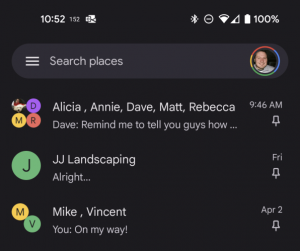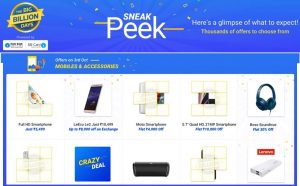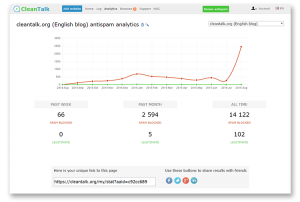— September 20, 2019

rawpixel / Pixabay
We recently sat down with Chris Marriott, President & Founder of Marketing Democracy, to chat about email acquisition, why it’s important to marketers, and how to get it right.
How focused should marketers be on email acquisition and why?
As we head into the holiday season, which in the world of email marketing starts in September, one of the most important keys to a successful holiday program is the health of one’s email subscriber list. Over the course of any given year there are several factors that can lead to a decrease in your subscriber base.
- Subscribers change email address and are lost
- Or they stop responding to your emails and “silently” unsubscribe from your list
- Or they actively unsubscribe
Regardless of the cause, these all add up to a shrinking number of engaged subscribers over the course of time. Most marketers cannot replace lost subscribers quickly enough if they only rely on their website and POS to get new email subscribers. Email marketers need to find other sources of new subscribers; sources that are safe and cost-effective.
What’s the most important thing to consider before embarking on an email acquisition project?
In an ideal world you wouldn’t have to choose between quantity of new email subscribers and quality of new email subscribers, but you don’t live in an ideal world. So, most email marketers focus on obtaining the most new email addresses for the lowest possible cost. The problem with this approach is that it ignores the fact that bad new addresses are worse than no new subscribers.
Use RPE vs. CPA to Gauge Success
When you are using CPA as your key measurement you are always going to get a mix of some good email addresses and a lot of bad ones. Because that’s how your lead gen partners keep the CPAs low. In truth, you should care a lot more about the quality of email subscribers you are adding to your list, and if they cost more, that’s OK.
The real way to measure success if the increase in revenue per email (RPE) you achieve across the board with your new subscribers vs. the cost to acquire them. As long as the former is greater than the latter, you’re winning. And on top of that, you’re not negatively impacting the overall delivery rate of your list by inserting bad addresses into the mix.
What email acquisition strategies offer the highest return with the lowest risk?
Nothing will ever beat the quality of an email address acquired via an opt-in form on your website.
Notice I wrote “opt-in form”. That’s because many marketers will automatically add a new customer to their email database and bury that fact in their website’s T&A language. Or they will pre-check a box asking that customer to become a subscriber (see below why that’s a bad idea).
Are there risks associated with working with external email acquisition vendors or ramping up internal acquisition efforts? How can marketers avoid them?
There are two key steps you can take to mitigate the risks associated with adding new subscribers to your email database working with external acquisition vendors.
- The first step is to validate every single email address that comes into your system. Run them through an email validation tool like yours, FreshAddress, to make sure they aren’t an invalid email address, a known complainer, or worse, a spam trap. The slightest uptick in bad email addresses on your list will trigger the ISPs to send your campaigns to the spam folder, or taking it a step further, block you. It’s simply not worth it.
- The second step you can take is to only put people into your list who you are sure want to be there. And this starts with true email opt-in. There is simply no substitute for asking a new subscriber in input his or her email address into a form.
-
- Are you choosing quality of quantity when you stick to you guns on this? Yes.
- But adding people to you list that you know what to be there, not only reduces the possibility that they will quickly unsubscribe, it also increases the probability that they will stay engaged with your email campaigns, which will keep your deliverability at a healthy number.
-
What do ESPs and/or Marketers need to consider before deploying to acquired email data?
- Monitor new subscriber engagement starting with your welcome campaign. If someone who has opted in doesn’t engage with your welcome email(s), that is a pretty good indicator that he or she will not be a highly engaged subscriber over the long term. By monitoring this engagement, you should be able to adjust your spending with third parties to start focusing on those sources of new subscribers that deliver a higher percentage of engaged people.
- Optimize your spend even further, focusing on those sources of new subscribers that pass the engagement threshold and spend the most money, the most often with you. This is the key step because if you do this, then each month the overall quality of the new subscribers you are adding to your list continues to get better. So even those who don’t start out at the beginning with a great email list will be building one over time.
- Test new sources—constantly. Part of the optimization process involves dumping bad sources from your buy and spending more on the good sources. The other part of optimizing your buy is around testing new sources and seeing if they can deliver as well or better than your best-performing sources at that time.
What role, in any, do email acquisition services come into play in the RFPs managed by your company?
In general, ESPs hate the idea of introducing new email subscribers into your database unless they signed up on your website or POS.
Any other source of new email subscribers is not something that will make them happy. So, they will give you every reason under the sun as to why you shouldn’t do it. In their defense, they’ve seen how poorly managed email acquisition programs have blown up in a client’s face.
And because of that, there aren’t really any ESPs that focus on helping you add new subscribers other than Zeta Global (Yesmail used to provide this prior to getting out of the platform business earlier this year). But in the ESPs’ defense, most email marketers don’t place acquisition as a priority when selecting a new email partner. So, it’s left to third parties to provide these services to email marketers. Which is a lost opportunity for the ESPs, in my opinion.
If email acquisition services aren’t important for email marketers selecting new ESPs, what are some of the things they are focusing on today?
Well, despite what some might have you believe, it isn’t omnichannel or multichannel capabilities!
The focus in the enterprise RFPs we are managing is still on key components of the email marketing capabilities, specifically around ease of use/ do it myself elements for the campaign production teams and reporting tools for the marketing teams. IT looks for extensive APIs and data security. These are still primarily email platforms, and that’s as it should be given the volume of emails sent as compared to any other outbound channel.
The biggest challenge for most companies heading into an RFP is who to include. There are so many options today and differentiating between the platforms takes a lot of preliminary work that many brands just skip over. So what should be most important for email marketers to focus on in their RFP is starting with the right mix of vendors! We make sure that happens in our RFPs.
Digital & Social Articles on Business 2 Community
(61)
Report Post







